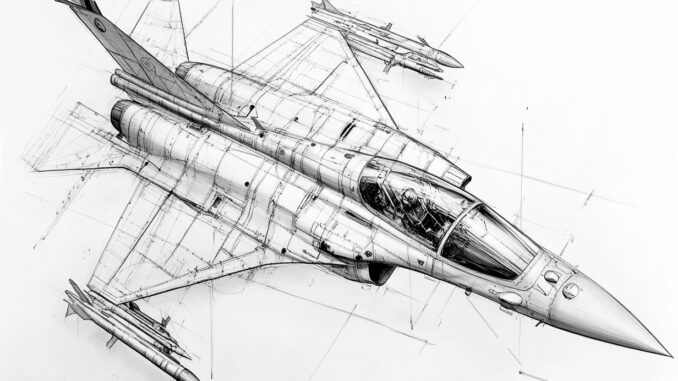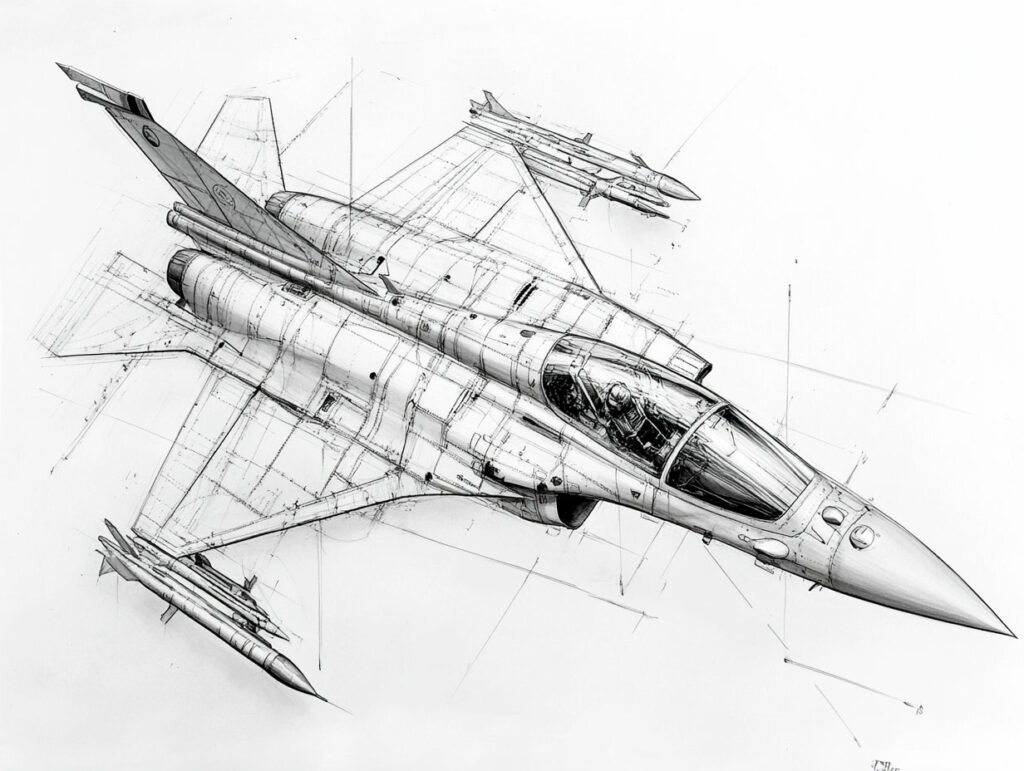
Precise evaluation of the fuel consumption of each fighter plane according to its missions, figures to back it up, in fully metric format!
The Rafale, F-35, F-22, F-16, F/A-18 and MiG-29 illustrate the diversity of fuel consumption performance. Each fighter aircraft meets distinct operational requirements, whether for interception, tactical support or air superiority missions. Pilots and planners therefore look at precise figures in order to control the financial and logistical impact of each flight. The aim of this report is to provide a detailed overview of the differences in consumption, taking into account the characteristics of each model, such as thrust, engine type and external load. There are many challenges: efficiency in cruise flight, performance in afterburner mode and payload capacity in combat situations.

The specificity of the Rafale and the F-35
The Rafale is one of the most flexible multirole fighter aircraft. It can perform air superiority, ground attack or reconnaissance missions. Its M88 engine, designed by Safran, offers flexible afterburning and thrust adapted to each scenario. At cruising speed, this aircraft consumes an average of 4,500 liters of kerosene per hour. In intensive use with afterburning, fuel consumption can exceed 8,000 liters per hour, depending on air density and altitude. The internal tank of the Rafale holds approximately 4,700 liters, which sometimes means that additional canisters must be carried for long missions. The cost of fuel fluctuates around 0.90 to 1.20 euros per liter on the wholesale market, resulting in significant expenses for each extended sortie.
The F-35, developed by Lockheed Martin, has the F135 engine. Its afterburner power often exceeds that of the Rafale, but its weight and bearing surface also influence its energy needs. In a rapid climb or complex aerial maneuver, its fuel consumption easily reaches 9,000 liters per hour. On a more economical profile, such as patrol at medium altitude, it consumes around 5,500 liters per hour. The internal capacity of the F-35, estimated at 8,382 liters, gives it a significant range, although the actual range varies depending on the armament configuration and overall aerodynamics.
For both aircraft, the external configuration plays a major role. A Rafale equipped with light air-to-air missiles will be less energy-intensive than a version designed for bombing with guided and unguided bombs. The same goes for the F-35, whose internal payload reduces drag, but can be supplemented with external tanks if necessary. Each manufacturer seeks to optimize the integration of payloads to limit drag and maintain a satisfactory balance between performance and fuel consumption. Operationally, the choice of aircraft therefore depends largely on the scale of the mission and the distance to be traveled.
The technical approach of the F-22 and F-16
The F-22 Raptor is characterized by advanced stealth and advanced air combat capabilities. Its F119 engine, produced by Pratt & Whitney, aims to optimize the thrust-to-weight ratio. In afterburner mode, fuel consumption can reach almost 11,000 liters per hour, depending on the payload and altitude. At cruising speed, the F-22 is reasonably efficient, around 6,000 liters per hour, thanks to an aerodynamic profile that reduces drag. The fighter plane carries around 8,200 liters internally, but its long-range interception missions may require the addition of compliant tanks, influencing the total fuel cost.
The lighter F-16 Fighting Falcon adopts a different philosophy. Its F110 (or F100 on some versions) engine has a more modest fuel flow, especially in economy mode. During a standard patrol at intermediate altitude, consumption is around 3,500 to 4,000 liters per hour. In afterburning, this value can double. The internal tank varies according to the production blocks, but generally runs at around 3,200 liters. Some aircraft have compliant tanks or cans under the wings to extend their range beyond 3,000 kilometers, depending on the weapon load.
The F-22 and F-16 incorporate sophisticated electronic devices, which indirectly affect fuel consumption. The sensors, radars and electronic warfare systems require the auxiliary power unit, increasing the overall energy expenditure. In practice, air forces take these parameters into account when planning missions. They calculate the amount of fuel needed to ensure a prolonged air presence, while maintaining a safety margin. Pilots must also anticipate high-power flight phases and choose optimal altitudes to limit the energy bill. This scrupulous management of every liter consumed aims to maintain an acceptable cost-benefit ratio, especially in the context of frequent training or extended deployments.

The operational efficiency of the F/A-18 and the MiG-29
The F/A-18, operated by several air forces, remains versatile. It can take part in air superiority, ground support or carrier landing operations. Its two engines, of the F404 or F414 series, have variable fuel consumption depending on the flight mode. In cruise, the F/A-18 can use approximately 5,000 to 5,500 liters per hour. In afterburning mode, it can exceed 10,000 liters per hour for rapid climbs or sustained maneuvers. The internal tank, of approximately 6,000 liters, is often supplemented by drop tanks in a multirole configuration. Naval operations also require additional safety reserves, given the frequent approach and go-around procedures.
As for the MiG-29, manufactured in Russia, its design favors maneuverability in close combat. This fighter plane, powered by two RD-33 turbojets, has a fairly high fuel consumption in military mode. The figures vary according to the versions, but it is not unusual to reach almost 7,500 liters per hour in standard use. With afterburning, it can climb to more than 13,000 liters per hour, especially during an initial climb or tactical engagement. Its internal tank is limited to approximately 3,500 liters, making the use of external tanks essential for long-distance interception missions. In budgetary terms, this data translates into substantial expenses, given that the price of kerosene fluctuates between 0.90 and 1.20 euros per liter.
The F/A-18 and the MiG-29 illustrate two distinct visions of airborne employment. One is designed to operate with a wide range of armaments and sensors, while the other relies on agility in the visual domain. Fuel consumption therefore varies according to the doctrine of engagement and the payload configuration. Maintenance services work closely with logisticians to limit unnecessary afterburning periods and rationalize the use of every liter. Decisions are based on a compromise between mission effectiveness, technical constraints and overall operational cost.
War Wings Daily is an independant magazine.